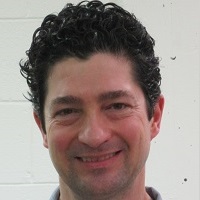7.2: Radioactivity Terminology
- Page ID
- 9749
\( \newcommand{\vecs}[1]{\overset { \scriptstyle \rightharpoonup} {\mathbf{#1}} } \)
\( \newcommand{\vecd}[1]{\overset{-\!-\!\rightharpoonup}{\vphantom{a}\smash {#1}}} \)
\( \newcommand{\id}{\mathrm{id}}\) \( \newcommand{\Span}{\mathrm{span}}\)
( \newcommand{\kernel}{\mathrm{null}\,}\) \( \newcommand{\range}{\mathrm{range}\,}\)
\( \newcommand{\RealPart}{\mathrm{Re}}\) \( \newcommand{\ImaginaryPart}{\mathrm{Im}}\)
\( \newcommand{\Argument}{\mathrm{Arg}}\) \( \newcommand{\norm}[1]{\| #1 \|}\)
\( \newcommand{\inner}[2]{\langle #1, #2 \rangle}\)
\( \newcommand{\Span}{\mathrm{span}}\)
\( \newcommand{\id}{\mathrm{id}}\)
\( \newcommand{\Span}{\mathrm{span}}\)
\( \newcommand{\kernel}{\mathrm{null}\,}\)
\( \newcommand{\range}{\mathrm{range}\,}\)
\( \newcommand{\RealPart}{\mathrm{Re}}\)
\( \newcommand{\ImaginaryPart}{\mathrm{Im}}\)
\( \newcommand{\Argument}{\mathrm{Arg}}\)
\( \newcommand{\norm}[1]{\| #1 \|}\)
\( \newcommand{\inner}[2]{\langle #1, #2 \rangle}\)
\( \newcommand{\Span}{\mathrm{span}}\) \( \newcommand{\AA}{\unicode[.8,0]{x212B}}\)
\( \newcommand{\vectorA}[1]{\vec{#1}} % arrow\)
\( \newcommand{\vectorAt}[1]{\vec{\text{#1}}} % arrow\)
\( \newcommand{\vectorB}[1]{\overset { \scriptstyle \rightharpoonup} {\mathbf{#1}} } \)
\( \newcommand{\vectorC}[1]{\textbf{#1}} \)
\( \newcommand{\vectorD}[1]{\overrightarrow{#1}} \)
\( \newcommand{\vectorDt}[1]{\overrightarrow{\text{#1}}} \)
\( \newcommand{\vectE}[1]{\overset{-\!-\!\rightharpoonup}{\vphantom{a}\smash{\mathbf {#1}}}} \)
\( \newcommand{\vecs}[1]{\overset { \scriptstyle \rightharpoonup} {\mathbf{#1}} } \)
\( \newcommand{\vecd}[1]{\overset{-\!-\!\rightharpoonup}{\vphantom{a}\smash {#1}}} \)
\(\newcommand{\avec}{\mathbf a}\) \(\newcommand{\bvec}{\mathbf b}\) \(\newcommand{\cvec}{\mathbf c}\) \(\newcommand{\dvec}{\mathbf d}\) \(\newcommand{\dtil}{\widetilde{\mathbf d}}\) \(\newcommand{\evec}{\mathbf e}\) \(\newcommand{\fvec}{\mathbf f}\) \(\newcommand{\nvec}{\mathbf n}\) \(\newcommand{\pvec}{\mathbf p}\) \(\newcommand{\qvec}{\mathbf q}\) \(\newcommand{\svec}{\mathbf s}\) \(\newcommand{\tvec}{\mathbf t}\) \(\newcommand{\uvec}{\mathbf u}\) \(\newcommand{\vvec}{\mathbf v}\) \(\newcommand{\wvec}{\mathbf w}\) \(\newcommand{\xvec}{\mathbf x}\) \(\newcommand{\yvec}{\mathbf y}\) \(\newcommand{\zvec}{\mathbf z}\) \(\newcommand{\rvec}{\mathbf r}\) \(\newcommand{\mvec}{\mathbf m}\) \(\newcommand{\zerovec}{\mathbf 0}\) \(\newcommand{\onevec}{\mathbf 1}\) \(\newcommand{\real}{\mathbb R}\) \(\newcommand{\twovec}[2]{\left[\begin{array}{r}#1 \\ #2 \end{array}\right]}\) \(\newcommand{\ctwovec}[2]{\left[\begin{array}{c}#1 \\ #2 \end{array}\right]}\) \(\newcommand{\threevec}[3]{\left[\begin{array}{r}#1 \\ #2 \\ #3 \end{array}\right]}\) \(\newcommand{\cthreevec}[3]{\left[\begin{array}{c}#1 \\ #2 \\ #3 \end{array}\right]}\) \(\newcommand{\fourvec}[4]{\left[\begin{array}{r}#1 \\ #2 \\ #3 \\ #4 \end{array}\right]}\) \(\newcommand{\cfourvec}[4]{\left[\begin{array}{c}#1 \\ #2 \\ #3 \\ #4 \end{array}\right]}\) \(\newcommand{\fivevec}[5]{\left[\begin{array}{r}#1 \\ #2 \\ #3 \\ #4 \\ #5 \\ \end{array}\right]}\) \(\newcommand{\cfivevec}[5]{\left[\begin{array}{c}#1 \\ #2 \\ #3 \\ #4 \\ #5 \\ \end{array}\right]}\) \(\newcommand{\mattwo}[4]{\left[\begin{array}{rr}#1 \amp #2 \\ #3 \amp #4 \\ \end{array}\right]}\) \(\newcommand{\laspan}[1]{\text{Span}\{#1\}}\) \(\newcommand{\bcal}{\cal B}\) \(\newcommand{\ccal}{\cal C}\) \(\newcommand{\scal}{\cal S}\) \(\newcommand{\wcal}{\cal W}\) \(\newcommand{\ecal}{\cal E}\) \(\newcommand{\coords}[2]{\left\{#1\right\}_{#2}}\) \(\newcommand{\gray}[1]{\color{gray}{#1}}\) \(\newcommand{\lgray}[1]{\color{lightgray}{#1}}\) \(\newcommand{\rank}{\operatorname{rank}}\) \(\newcommand{\row}{\text{Row}}\) \(\newcommand{\col}{\text{Col}}\) \(\renewcommand{\row}{\text{Row}}\) \(\newcommand{\nul}{\text{Nul}}\) \(\newcommand{\var}{\text{Var}}\) \(\newcommand{\corr}{\text{corr}}\) \(\newcommand{\len}[1]{\left|#1\right|}\) \(\newcommand{\bbar}{\overline{\bvec}}\) \(\newcommand{\bhat}{\widehat{\bvec}}\) \(\newcommand{\bperp}{\bvec^\perp}\) \(\newcommand{\xhat}{\widehat{\xvec}}\) \(\newcommand{\vhat}{\widehat{\vvec}}\) \(\newcommand{\uhat}{\widehat{\uvec}}\) \(\newcommand{\what}{\widehat{\wvec}}\) \(\newcommand{\Sighat}{\widehat{\Sigma}}\) \(\newcommand{\lt}{<}\) \(\newcommand{\gt}{>}\) \(\newcommand{\amp}{&}\) \(\definecolor{fillinmathshade}{gray}{0.9}\)In an attempt to maximize stability, nuclei have several options. Each of these options is a distinct type of radioactive decay. Before discussing the individual types of decays, we will first describe the general terminology used to describe these transformations.
The activity, A, of a radioactive sample is defined to be the number of radioactive decays per second, typically measured in Becquerel (Bq), where 1.0 Bq = 1 decay/second, or Curie (Ci), where
\[1.0\, Ci = 3.7 x 10^{10}\, Bq.\]
The decay constant, , is defined to be the probability per second of any particular nucleus decaying.
Therefore, the activity of a sample is the product of the decay constant and the number of nuclei (N) in the sample:
\[ A =2N\]
Also, the activity can be thought of as the change in the number of radioactive nuclei present, because every decay reduces the number of radioactive nuclei remaining. Therefore,
\[A = -\frac{dN}{dt}\]
Combining these results yields a differential equation:
\[ - \frac{dN}{dt} = \lambda N\]
\[\frac{dN}{dt} = -\lambda N\]
with solution
\[N(t) = N_0e^{-\lambda t}\]
The number of radioactive nuclei in a sample decreases exponentially over time.
Since the activity is proportional to the number of atoms, the activity follows the same exponential decrease,
\[A(t) = A_0e^{-\lambda t}\]
The half-life is the amount of time it takes for the activity of a sample, or the number of atoms in a sample, to be reduced by one-half. This can be related to the decay constant via
\[ \begin{array}{c} A(t) = A_0e^{-\lambda t} \\ 0.5A_0 = A_0e^{-\lambda t_{1/2}} \\ - \lambda t_{1/2} = \log(0.5) \\ \lambda = \frac{-\log(0.5)}{t_{1/2}} \\ \lambda = \frac{\log(2)}{t_{1/2}} \end{array} \]
Radioactivity
A radioactive sample has an activity of 2.3 Ci. After 1.0 hr, the activity has decreased to 1.7 Ci. What percentage of the sample will remain after 6.0 hr?
Since the activity decreases exponentially,
\[ \begin{array}{c} A(t) = A_0 e^{-\lambda t} \\ 1.7 \mu C_i = (2.3 \mu C_i) e^{-\lambda (1.0/hr)} \\ e^{-\lambda(1.0 hr)} = 0.74 \\ - \lambda(1.0 hr) = \log(0.74) \\ \lambda = 0.302 hr^{-1} \end{array} \]
The decay constant is 0.302 hr-1, meaning each atom has approximately a 30% chance of decaying each hour.
After 6 hrs,
\[ \begin{array}{c} A(t) = A_0 e^{-\lambda t} \\ A(6.0 hr) = (2.3 \mu C_i)e^{-(0.302hr^{-1})(6.0 hr)} \\ A(6.0 hr) = 0.376 \mu C_i \end{array} \]
The activity has dropped to 0.376/2.3 = 0.163 of its initial value. Since activity and number of atoms are proportional, 16% of the sample remains after 6.0 hr.
Carbon Dating
A sample of leather from a tomb is burned to obtain 0.20 g of carbon. The measured activity of the sample is 0.017 Bq. How old is the sample? In the environment, about one carbon atom in 7.7 x 1011 is 14C. The half-life of 14C is 5730 yrs.
The half-life can be related to the decay constant via
\[ \begin{array} \lambda = \frac{\log(2)}{t_{1/2}} \\ \lambda = \frac{\log(2)}{5730 \text{ yr}} \\ \lambda = 1.21 x 10^{-4} \text{ yr} ^{-1} \end{array}\]
To find the age of the leather, we need to calculate the activity of 14C in the present environment, and assume that this was the activity of the leather when the leather sample was in equilibrium with its environment (i.e., when it was alive). To do this, find the number of carbon atoms in the sample, then find how many of those are 14C. From this number, the activity of a “new” piece of leather can be determined.
\[ 0.20 g \bigg( \frac{6.02 x10^{23} atoms C}{12 g} \bigg) = 1.00 x 10^{23} atoms C\]
\[1.00 x 10^{23} atoms C \bigg( \frac{1 atom^{14}C}{7.7 x10^{11} atoms C}\bigg) = 1.30 x 10^{10} atoms^{14}C\]
Therefore, there were 1.30 x 1010 atoms of 14C present in the sample when the sample was alive. Since the decay constant gives the probability of decay as 1.21 x 10-4 yr-1, the initial activity of the sample was
\[ \begin{array}{rcl} A_0 = (1.30x10^{10}atoms^{14}C)(1.21x10^{-4}yr^{-1}) \\ A_0 = 1.57x10^6 decays/ yr \\ A_0 =0.050 decays /s = 0.050 Bq \end{array} \]
Therefore,
\[ A(t) = A_0 e^{-\lambda t} \]
\[ 0.017 Bq = (0.050Bq)e^{-(1.21x10^{-4})t}\]
\[e^{-(1.21x10^{-4})t} = 0.34\]
\[-(1.21 x10^{-4})t = \log(0.34)\]
\[t = 8900 \text{ yr}\]
The sample is 8900 years old.


